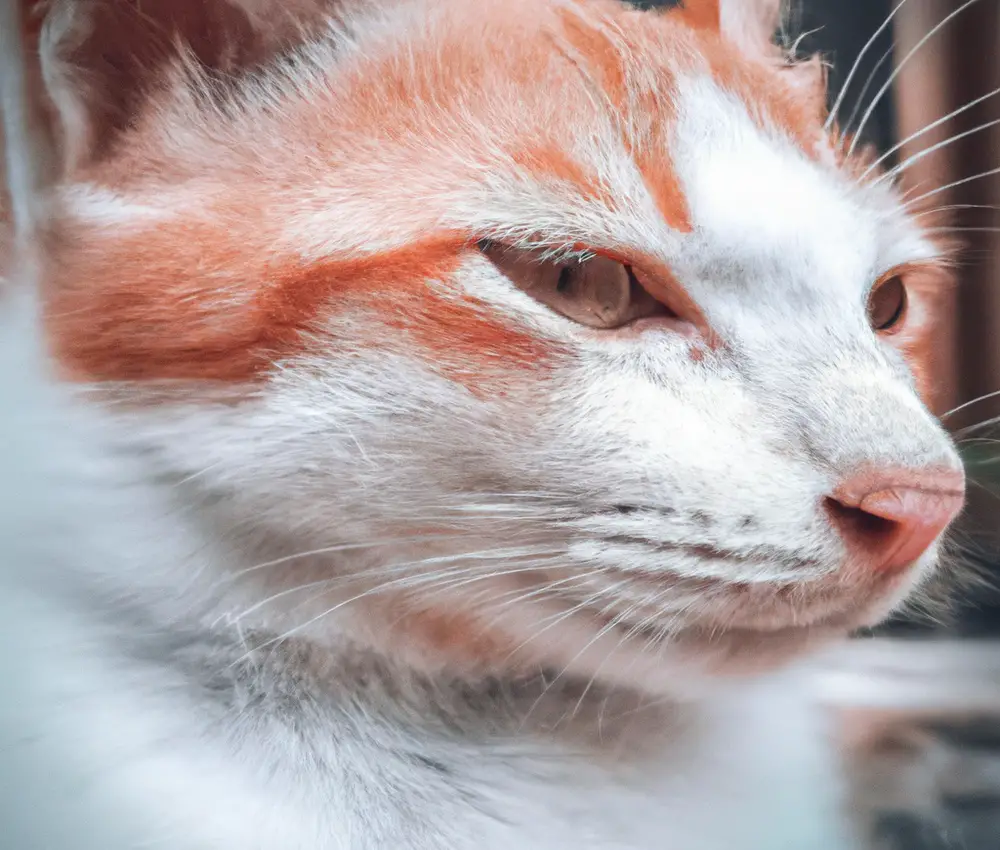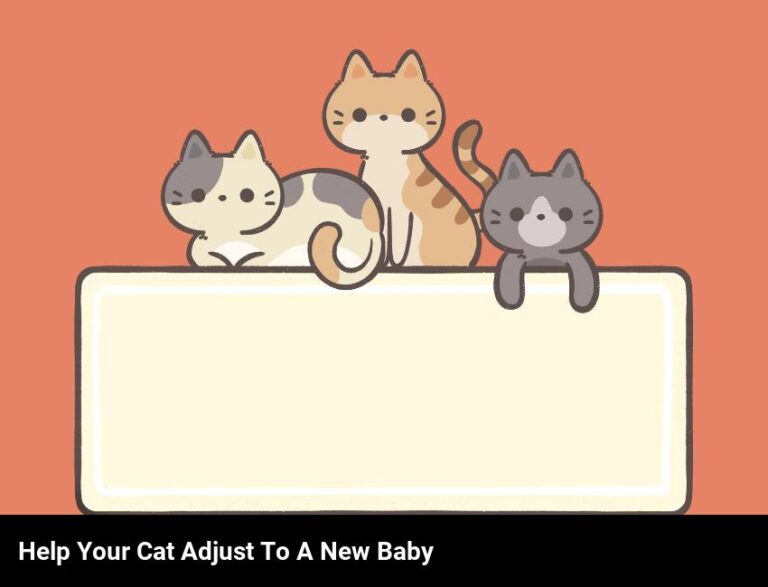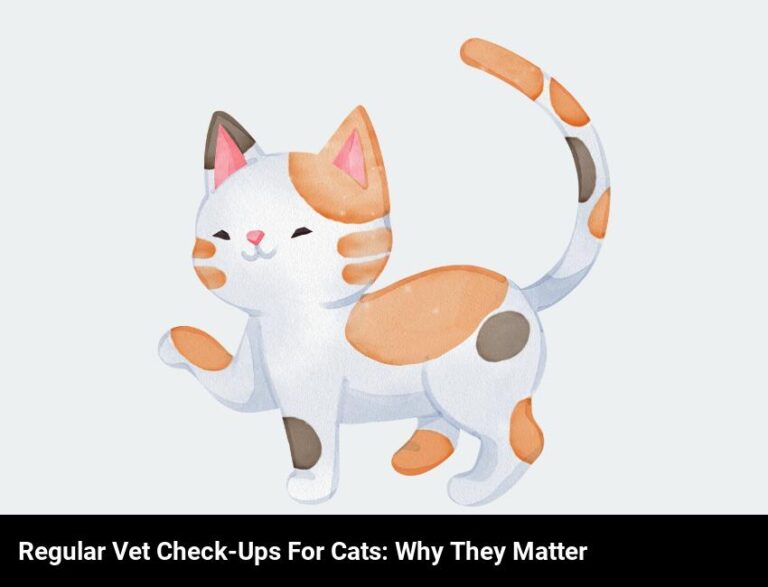Do Cats Know When They Are In Trouble?
Key Takeaways:
- Cats can perceive danger or discomfort through their senses.
- Cats may exhibit behavioral changes when they sense trouble.
- Cats rely on their instincts and body language to communicate distress.
- Understanding your cat’s behavior can help you determine if they are in trouble.
Have you ever wondered if cats have a sixth sense that alerts them when trouble is brewing? Do they possess the ability to recognize danger or understand when they’ve made a mistake?
As a cat owner, I’ve often pondered these questions and observed my feline friend’s behavior closely.
In this blog article, we will explore the fascinating topic of whether cats know when they are in trouble. We’ll delve into their natural instincts, body language, and environmental factors that may trigger distress.
Along the way, I’ll also share some tips on how to help a cat in trouble.
So, let’s unlock the mystery and discover the depths of feline intuition together!
| Yes | No | Uncertain | |
|---|---|---|---|
| Argument 1 | Supporting evidence: Cats show signs of fear and distress when faced with dangerous situations. | Contrary evidence: Cats may not understand the concept of danger and may not be able to anticipate it. | There is no clear consensus: The ability of cats to comprehend danger is still debated among experts. |
| Argument 2 | Supporting evidence: Cats are known to exhibit defensive behaviors when they feel threatened. | Contrary evidence: Cats may react to danger instinctively, rather than consciously understanding it. | Limited research: Further studies are needed to determine if cats possess a true understanding of danger. |
| Argument 3 | Supporting evidence: Cats can learn from past experiences and avoid situations that have previously caused harm. | Contrary evidence: Cats may associate certain actions or objects with negative experiences, but this does not necessarily indicate an understanding of danger. | Subjective interpretation: Assessing whether cats truly understand they are in trouble requires subjective interpretation of their behavior. |
Why Do Cats Display Behaviors That Indicate Trouble?
Cats display behaviors that indicate trouble due to their natural instincts, sensitivity to their surroundings, and need for comfort and reassurance.
1. Understanding a Cat’s Nature and Behavior
Understanding a cat’s nature and behavior is key to building a strong bond with your feline friend. Cats are independent creatures by nature, but they still crave social interaction and physical stimulation.
They have their unique ways of communicating with us, which include purring, meowing, and body language.
Observing their behavior can give us insights into their emotions and needs. Scratching furniture, for example, may indicate the need for a scratching post.
Hiding or crouching may mean they are anxious or scared.
Providing them with a safe and enriched environment can help prevent undesirable behaviors and keep them happy and healthy. Remember, each cat is unique, so take the time to understand your cat’s individual personality and adapt accordingly.
2. Cat Body Language: Signs of Distress
2. Cat Body Language: Signs of Distress
Cats have their own ways of communicating when they are feeling distressed. Here are some signs to look out for:
- Tail Fluffing: When a cat’s tail becomes puffed up (or “fluffed”, it can indicate fear or anxiety.
- Hissing and Growling: These vocalizations are often a cat’s way of expressing aggression or discomfort.
- Scratching Furniture or People: If a cat starts scratching excessively, it may be a sign of stress or frustration.
- Avoidance or Hiding: Cats sometimes retreat to a secluded spot when they feel threatened or anxious.
- Dilated Pupils: When a cat’s pupils are larger than usual, it can suggest fear or arousal.
- Ears Pinned Back: Cats will flatten their ears against their head when they are feeling scared or defensive.
It’s important to pay attention to these signals. If you notice any of these signs, try to create a calm and safe environment for your cat.
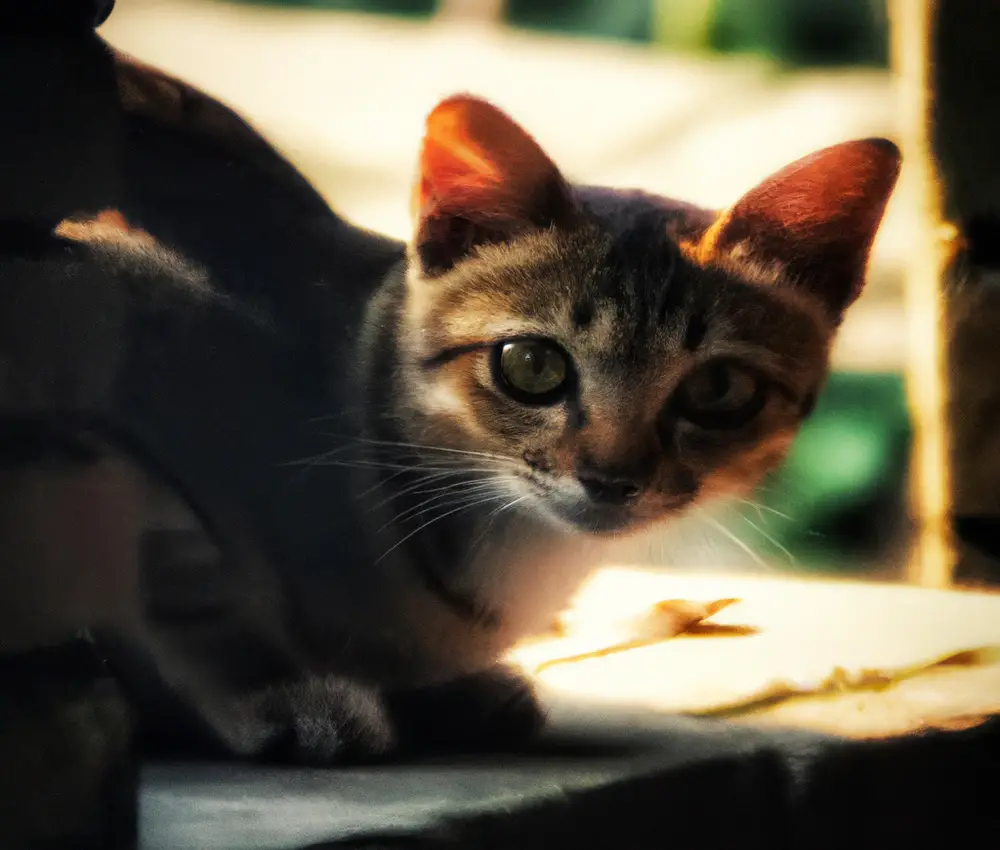
2.1. Changes in Posture and Movement
Changes in a cat’s posture and movement can indicate that they are in trouble or experiencing discomfort. Some common behaviors to look out for include hunching, crouching, limping, or difficulty in moving around.
A cat may also display aggression or appear more withdrawn than usual.
These changes can be a sign of physical pain, injury, or underlying health issues. Observing and understanding a cat’s body language is essential in identifying when they might need help or medical attention.
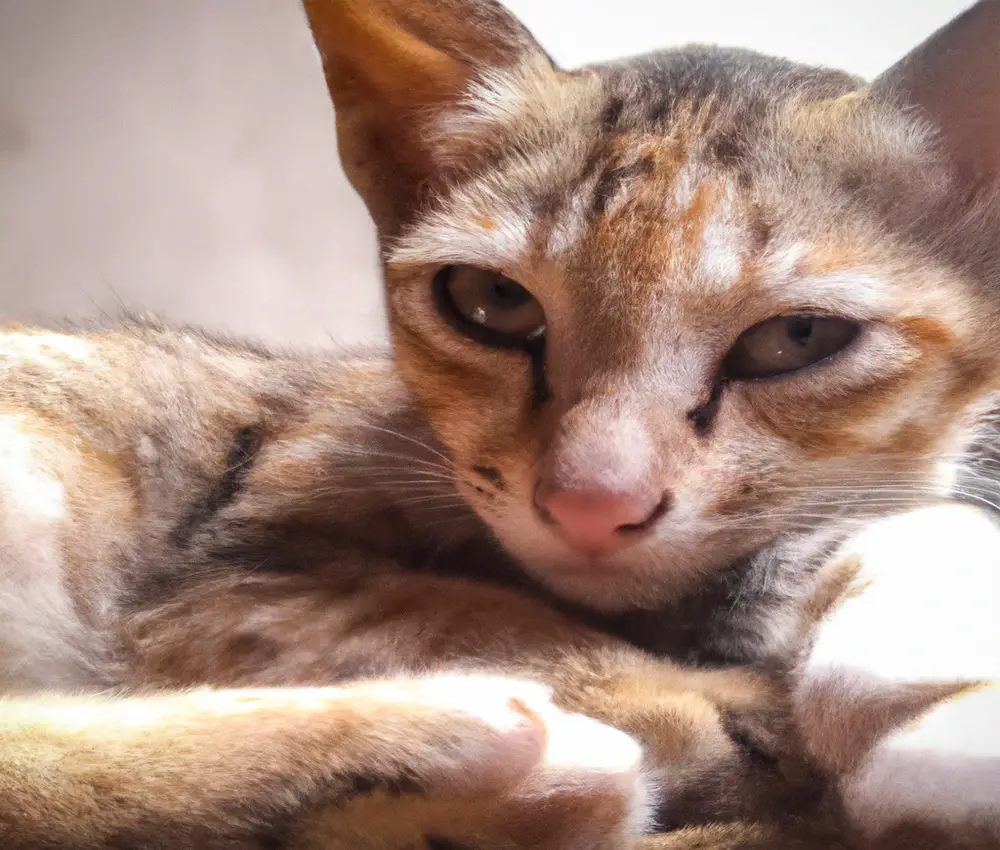
3. External Factors That Can Cause Cats to Feel in Trouble
External Factors That Can Cause Cats to Feel in Trouble can include loud noises, changes in their environment, and unfamiliar people or animals. These factors can trigger a sense of fear or anxiety in cats, leading to behaviors such as hiding, aggression, or excessive grooming.
Cats are sensitive creatures and may interpret these external factors as potential threats to their safety or territory.
It’s important to create a calm and secure environment for your cat and provide them with a safe space where they can retreat when they feel overwhelmed.
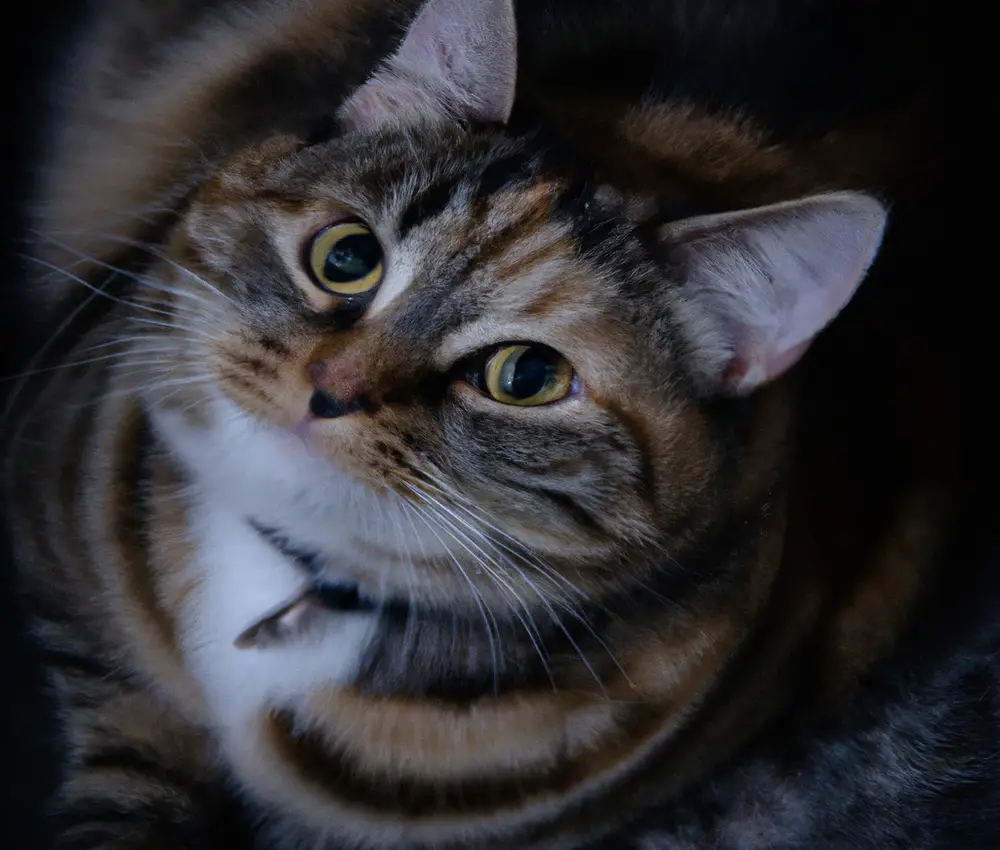
3.1. Loud Noises and Sudden Movements
Loud noises and sudden movements can be distressing for cats.
They have acute hearing and are easily startled.
If they display behaviors like hiding, running away, or hissing when exposed to loud noises or sudden movements, it’s their way of expressing fear or discomfort.
To help your cat feel safer, create a calm environment by reducing loud noises and sudden movements, and provide hiding spots or safe spaces for them to retreat to when they feel scared.
3.2. Changes in Environment or Routine
Changes in the environment or routine can significantly impact a cat’s behavior. Cats are creatures of habit, so even small alterations in their surroundings can cause stress or anxiety.
Examples of changes include moving to a new home, introducing a new pet or family member, rearranging furniture, or modifying feeding or playtime schedules.
Cats may react by hiding, becoming more vocal, displaying aggression, or having litter box issues. To minimize these issues, gradual introductions and maintaining a consistent routine are key.
3.3. Introduction of New Pets or People
Introducing new pets or people to your cat can be a sensitive process. Cats are territorial creatures and sudden changes can be stressful for them.
Here are some tips to make the introduction smoother:
- Gradual introduction: Allow your cat to get used to the new pet or person slowly. Start with short, supervised interactions and gradually increase the time.
- Positive associations: Make sure the new pet or person is associated with positive experiences for your cat. Offer treats or playtime during the introductions.
- Separate spaces: Provide separate spaces for your cat and the new addition initially. This allows them to get used to each other’s scent without direct contact.
- Patience: Sometimes, it may take time for cats to adjust to new additions. Be patient and give them the space they need to feel comfortable.
Remember, every cat is unique and may react differently. It’s important to observe their behavior and adjust the introduction process accordingly.
3.4. Medical Issues and Pain
Medical issues and pain can cause cats to exhibit behaviors that indicate trouble.
It’s important to recognize these signs and seek veterinary care promptly.
Some medical issues, such as urinary tract infections or dental problems, can cause cats to urinate outside the litter box or stop eating.
Pain from injuries or illnesses can lead to changes in behavior, such as aggression or withdrawal.
Paying attention to these signs and seeking appropriate medical treatment can help ensure the well-being of your feline friend.
4. How Cats Perceive and React to Trouble
Cats have a keen sense of perception. They can detect trouble through their powerful senses.
They may react by displaying certain behaviors, such as hiding, hissing, growling, or becoming aggressive.
Other signs of trouble may include excessive grooming, changes in appetite, or avoiding certain areas. If you notice these behaviors, it’s important to assess the situation and ensure the safety of your cat.
Consulting with a veterinarian can provide further guidance on how to address any potential issues.
4.1. Natural Instincts for Survival
4.1. Natural Instincts for Survival
Cats possess natural instincts for survival that influence their behaviors when they sense trouble.
These instincts include:
- Hiding: When cats feel threatened or in danger, they instinctively seek out hiding spots to protect themselves and stay out of sight.
- Aggression: In certain situations, cats may exhibit aggressive behaviors as a means of defending themselves or establishing dominance.
- Pouncing and attacking: Cats have a strong prey drive and may display hunting behaviors when they perceive a potential threat.
- Vocalizing: Cats use vocalizations such as hissing, growling, or yowling to communicate their discomfort or to warn potential adversaries.
- Flight response: When faced with a perceived danger, cats may attempt to flee the situation to ensure their safety.
These natural survival instincts play a vital role in helping cats navigate potentially dangerous situations and protect themselves from harm.
By understanding and respecting these instincts, we can better respond to our cats’ needs and provide them with a safe and secure environment.
4.2. Sensitivity to Their Surroundings
Cats have a keen sensitivity to their surroundings. They can detect even the subtlest changes in their environment.
This heightened awareness helps them navigate and respond to potential threats.
Cats rely on their sharp senses of hearing, sight, and smell to stay safe. They may display behaviors like hissing, hiding, or running away when they sense danger.
Being attuned to their surroundings is an instinctual trait that helps cats survive in the wild and adapt to their environment.
4.3. Bonding with Humans and Seeking Comfort
Bonding with humans and seeking comfort is an essential aspect of a cat’s behavior. Cats are known for forming strong bonds with their human companions, often seeking affection and attention from them.
They may rub against their owners, purr, or knead to show their affection.
When cats are in trouble or feel scared, they may seek comfort from their trusted human, looking for reassurance and safety. It’s important for cat owners to understand and respond to these behaviors, providing comfort and security to their feline friends.
5. Steps to Help a Cat in Trouble
Here are 5 steps to help a cat in trouble:
- Stay calm and assess the situation: Take a deep breath and observe the cat’s behavior closely. Is it injured, trapped, or in distress? Understanding the problem is the first step to finding a solution.
- Ensure safety: If the cat is in immediate danger, remove it from the source of harm. Be careful not to put yourself at risk in the process. If necessary, enlist the help of professionals, such as veterinarians or animal control.
- Provide comfort and reassurance: Approach the cat gently and speak soothingly. Offer food, water, and a safe place to rest. If the cat is scared or aggressive, use caution and let it calm down before attempting further actions.
- Seek professional assistance: Depending on the situation, it may be best to consult with a veterinarian for advice or to schedule a check-up. They can provide guidance on how to properly handle the cat’s specific issue and offer appropriate treatment if needed.
- Find a suitable long-term solution: Once the immediate problem is resolved, consider the cat’s long-term well-being. If it is a stray, contact local animal shelters or rescue organizations to find it a safe and loving home. If it belongs to someone, inform the owner about the incident and offer suggestions to prevent similar situations in the future.
5.1. Create a Safe and Calm Environment
Creating a safe and calm environment is essential for cats’ well-being. Here are some tips to help you achieve that:
- Provide a quiet and secluded space where your cat can retreat to when feeling stressed or overwhelmed.
- Set up vertical spaces, such as tall scratching posts or shelves, to give your cat a sense of security and the ability to observe their surroundings.
- Ensure your home is free from hazards, such as toxic plants, chemicals, or small objects that could be swallowed.
- Establish a routine and provide consistent feeding, play, and sleep schedules to help your cat feel secure and reduce anxiety.
- Avoid sudden loud noises or sudden changes in the environment that can startle or stress your cat.
Creating a safe and calm environment can significantly contribute to your cat’s overall well-being and may help minimize behaviors that indicate trouble.
5.2. Observe and Understand Their Behavior
To observe and understand a cat’s behavior, there are a few key things you can look out for. Pay attention to their body language, as it can tell you a lot about their mood and intentions.
Watch for signs of stress or discomfort, such as excessive scratching or hiding.
Additionally, observe their interactions with other animals or humans to gauge their social behavior. By observing these behaviors, you can gain insights into your cat’s well-being and potential trouble they may be facing.
5.4. Provide Reassurance and Support
When our cats display behaviors that indicate trouble, it’s important for us to provide reassurance and support.
Here are a few ways we can do that:
- Stay calm: Cats are sensitive to our emotions, so it’s essential to remain calm and composed when they’re feeling distressed. This will help them feel more secure and less anxious.
- Offer comfort: Provide your cat with a safe and cozy space where they can retreat to when they’re feeling stressed. Consider using a cat bed, blankets, or a quiet room where they can relax and feel secure.
- Gentle touches and soothing words: Petting your cat gently and using a soothing voice can help them feel reassured and loved. Avoid sudden movements or loud noises that may startle or upset them further.
- Provide distractions: Engage your cat in activities or playtime to divert their attention from whatever is causing them distress. This can include interactive toys, puzzle feeders, or spending quality time together.
- Consult a veterinarian: If your cat’s troubling behavior persists or worsens, it’s a good idea to seek professional help. An experienced veterinarian can help identify any underlying health issues or provide guidance on behavior management strategies.
Remember, every cat is unique, and it’s essential to approach their distress with patience and empathy.
By providing reassurance and support, we can help our feline friends navigate through their troubles and feel safe and loved.
5.5. Implement Positive Reinforcement Training
Positive reinforcement training is a effective way to encourage desired behaviors in cats. This training method involves rewarding your cat with treats, praise, or playtime when they exhibit good behavior.
Instead of punishing them for unwanted behavior, you focus on rewarding and reinforcing the behaviors you want to see more of.
This helps to create a positive association with the desired behavior and encourages your cat to repeat it in the future. Positive reinforcement training can be used to teach cats tricks, reduce problem behaviors, and build a stronger bond between you and your feline friend.
6. Frequently Asked Questions
- Frequently Asked Questions
- How can I tell if my cat is in trouble?
Look for common signs such as unusual aggression, excessive hiding, changes in appetite, lethargy, or vocalization.
Trust your instincts and consult a veterinarian if you suspect something is wrong.
2. Is it normal for cats to display aggressive behavior?
While occasional displays of aggression can be normal, persistent or severe aggression should be taken seriously.
It’s important to identify the underlying cause and seek guidance from a professional.
3. Why does my cat hide all the time?
Cats may hide when they’re scared, stressed, or not feeling well.
It’s crucial to create a safe and comfortable environment and provide mental stimulation to help reduce hiding behaviors.
4. My cat suddenly stopped eating, what should I do?
A sudden loss of appetite in cats can be a sign of a serious health issue.
Monitor their behavior closely and consult a veterinarian if the lack of appetite persists or if other symptoms arise.
5. How can I prevent common cat behavior problems?
Maintaining a consistent routine, providing mental and physical stimulation, and addressing any underlying medical conditions are key.
Positive reinforcement training can also help prevent behavior problems.
6. Can cats sense danger before humans?
Cats have heightened senses and may be more sensitive to certain stimuli, such as earthquakes or storms.
While they may exhibit fearful behaviors, there is no scientific evidence to prove they can predict danger before humans.
6.1. Can cats sense danger or upcoming situations that could harm them?
Cats have a remarkable ability to sense danger or impending harm. They have highly developed senses, especially their hearing and smell, which allow them to detect subtle changes in their environment.
Cats can pick up on things like the presence of predators, approaching storms, or even small movements that may indicate danger.
They may display behaviors such as hiding, hissing, or becoming more alert when they sense a potential threat. It’s important to pay attention to these cues and ensure their safety.
6.2. What should I do if my cat displays signs of distress?
If your cat is showing signs of distress, it’s important to take action to ensure their well-being. Here’s what you can do:
- Evaluate the situation: Observe your cat’s behavior closely and try to identify the cause of distress. Is there a loud noise, a new environment, or a potential health issue?
- Provide a safe space: Create a calm and quiet area where your cat can retreat to if they’re feeling anxious or overwhelmed. A cozy hiding spot or a familiar room can help them feel secure.
- Offer comfort: Approach your cat gently and speak to them in a soothing tone. Petting them or using calming techniques like slow blinking can help reassure them.
- Check for physical problems: If your cat’s distress seems unusual or continues for an extended period, it’s essential to consult a veterinarian. There could be an underlying health issue causing their discomfort.
- Eliminate stressors: If possible, remove any triggers causing distress, such as loud noises or unfamiliar people. Gradually introducing new experiences can also help reduce anxiety.
Remember, every cat is unique, and the signs of distress may vary. By being attentive and responsive, you can help your furry friend feel more at ease.
6.3. Can cats recognize when they have done something wrong?
Cats can recognize when they have done something wrong, but not in the same way humans do. They may display certain behaviors to indicate their guilt or remorse.
Some signs include avoiding eye contact, hiding, or acting submissive.
However, it’s important to note that cats are not capable of feeling guilt or shame like humans do. Instead, their behavior is a response to our reactions or the consequences of their actions.
It’s important to approach these situations with patience and understanding, as punishment can lead to fear or anxiety in cats.
6.4. Can cats feel guilt or shame?
Cats cannot feel guilt or shame as humans do. These emotions require complex cognitive abilities that cats do not possess.
While cats may display behaviors that appear similar to guilt or shame, such as hiding or avoiding eye contact, these are usually just responses to a perceived threat or conflict.
It’s important to understand cats on their own terms and not project human emotions onto them. Instead, focus on providing a safe and enriching environment for your feline friend.
Final Verdict
Cats are highly intuitive creatures who possess the ability to recognize and respond to situations that may be perceived as trouble.
Understanding a cat’s behavior and body language can provide valuable insights into their state of mind.
Factors such as changes in environment, physical discomfort, and social dynamics can all contribute to a cat feeling distressed.
It is our responsibility as cat owners to create a safe and supportive environment, observe their behavior, seek veterinary care when necessary, and provide reassurance and positive reinforcement.
By doing so, we can help our feline companions navigate through challenging situations and ensure their overall well-being.

